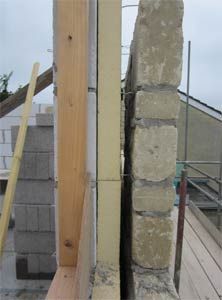This is beneficial for both your health and the environment.
Cavity wall insulation types uk.
Cavity wall insulation stores the heat within the inner walls bouncing it back into the room and holding it for longer.
A cavity wall is made up of two walls with a gap in between known as the cavity.
Insulating a cavity wall is an investment that will make your house safe energy efficient and comfortable.
Some wall types those without a cavity or timber framed buildings will only be suitable for external wall insulation.
Loose fill takes the form of small particles that form a material that can conform to any space without.
Wall insulation comes in various types depending what kind of wall you want to insulate.
Houses in the uk mostly have either solid walls or cavity walls.
Usually one wall is made of brick and the other is made of concrete.
This type of insulation is usually used in narrower cavity walls rather than using mineral wool insulation and is also preferred in some stone built houses or properties.
This type of insulation can be more expensive and is energy intensive to manufacture but has a high insulation value.
Moreover cavity wall insulation paves the way for a lower energy bill.
On the one hand it depends on the current situation cavity thickness and humidity degree and on personal preference budget ecology on the other hand.
This gives you a more even temperature and gets rid of the draughts that come down from the walls.
One of the more common forms of insulation is loose fill and blown in cavity wall insulation.
The first question you should ask yourself before thinking about wall insulation is what type of wall have i got solid walls were built up until the 1930s in most parts of the uk.
The outer leaf is usually made of brick and the inner layer of brick or concrete block.
A cavity wall is made up of two walls with a gap in the middle.
These are pushed into the cavity of the walls which is mixed with an adhesive which sticks the beads together to avoid being spilled outside of the wall.
Best cavity wall insulation according to price insulation value.
If your house was built after the 1920s it is likely to have cavity walls.
Around one third of the heat loss from most homes is through the walls so cavity insulation could save you up to 160 a year in heating bills 1 in fact according to figures from the energy saving trust website cavity wall insulation could pay for itself within less than 5 years.

